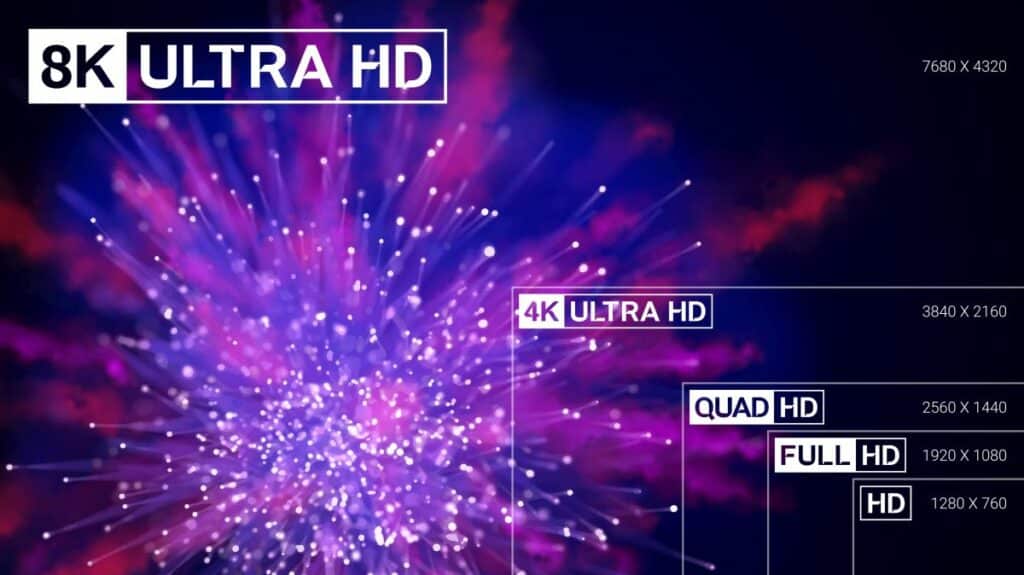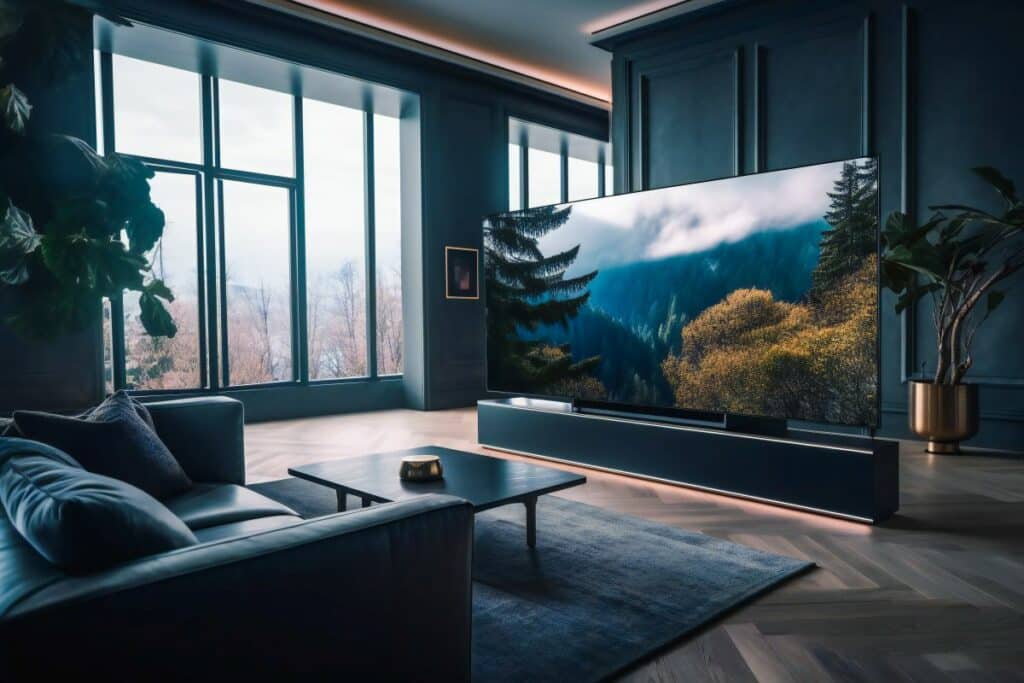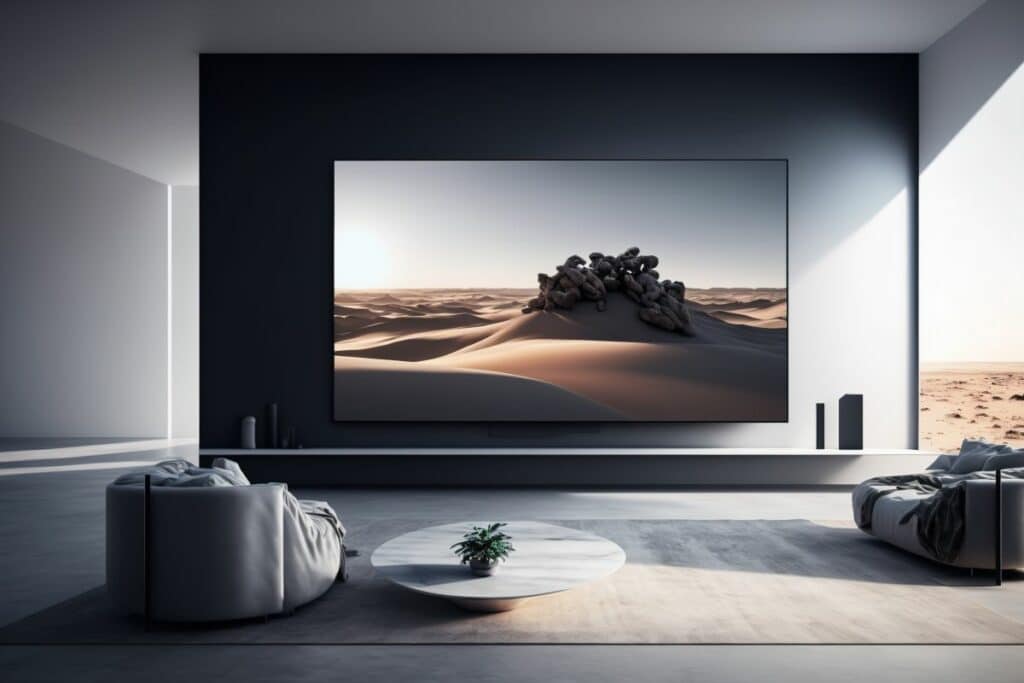the essentials in brief
4K refers to a horizontal resolution of around 4000 pixels, while Ultra HD is a generic term for a resolution of 3840 x 2160 pixels.
An Ultra HD resolution is used to offer high image quality with increased sharpness and detail. Learn more about Ultra HD here...
Ultra HD refers to the resolution and offers high image sharpness, while QLED refers to the display technology and offers improved color reproduction. Discover types of resolutions here...
Experience your favorite series, films and video games in such a way that you have the feeling of being right in the middle. With four times more pixels than Full HD The question arises as to what Ultra HD actually means and what other advantages it offers. And how can Ultra HD best enhance your entertainment experience? In this blog post, we dive deep into the magic of Ultra HD resolution and discover why it's the next big thing in consumer electronics!
Contents
Ultra HD – what is it actually?

Ultra HD or UHD stands for Ultra High Definition and is a standard for image resolution in digital video technology. Compared to Full HD, Ultra HD offers a much more detailed and sharper image quality. With 3840 x 2160 pixels, Ultra HD is characterized by a particularly impressive picture quality .
The higher the resolution, the more detailed and sharper the image. In addition to the resolution, Ultra HD also offers a high color depth and an extended dynamic range, resulting in more vivid colors and deeper blacks.
Ultra HD is the standard for most high-end televisions and monitors. It offers excellent picture quality for movies, games and other picture-intensive applications. The technology behind Ultra HD is constantly evolving, improving color depth, dynamic range and even three-dimensional presentation.
History
Did you know that the term 4K actually comes from the film industry? She refers to the almost 4000 pixelthat can be recorded horizontally on a frame of film. In the home, 4K is mostly used as a synonym for Ultra HD, although there are slight differences in pixel count.
types of resolutions

Every image we see on a digital screen is made up of tiny dots we call pixels. These pixels are the basic building blocks of all resolutions. The Aspect ratio determines the ratio of width to height of an image. It is crucial to how we perceive and interpret images.
A journey into the past: SD and HD
The Birth of the Standard Definition (SD)
Our journey begins with Standard Definition, the ancestor of all resolutions. With only 480 lines of information it offers us a window into the world of moving images that enchants us despite its lack of detail.
The Evolution to High Definition (HD)
With the advent of high definition, our Revolutionizing the perception of images. Suddenly we could see a world on televisions and monitors that was much closer to our natural vision.
A big leap: Full HD and Ultra HD
Full HD: A quantum leap in picture quality
With Full HD, the picture quality has been increased once again. Every detail becomes even sharper, every scene even more vivid, every experience even more intense.
Ultra HD: An even more detailed experience
Ultra HD is the next big step which opens the window to our digital world even further. With four times as many pixels as Full HD, Ultra HD offers an even more detailed and fascinating viewing experience.
Beyond the imagination: 4K and 8K
4K: The next dimension of vision
Ultra HD offers a higher resolution than traditional HD formats. While Full HD offers 1.920 x 1.080 pixels, Ultra HD has four times as many pixels at 3.840 x 2.160 pixels. This means that the level of detail and image quality are significantly higher with Ultra HD. 4K has pulled us even deeper into the digital experience with an even higher resolution. Our visual experiences come alive like never before.
8K: The future of resolution
8K is at the forefront of resolution technology and offers an almost unimaginable level of detail. It promises to take our visual experience into a new era where the lines between the digital and real worlds will continue to blur.
Tip: Ultra HD content requires a fast internet connection. Before you buy an Ultra HD TV, check your internet speed to make sure you're able to stream 4K content without interruptions.
Pros and cons of Ultra HD resolution
As technology has advanced, the way we consume visual content has changed dramatically. One of those changes is this Transition from Standard HD (High Definition) to Ultra HD (Ultra High Definition). But what are the pros and cons of Ultra HD? Below we take a look at the intricacies of this technology and how it impacts our media consumption!
You should pay attention to this in addition to the resolution!

We all know it: that exciting moment when you stand in front of the huge shelf in the electronics department, ready to dive into the exciting world of high-definition televisions. The eye wanders from device to device, one model seems more enticing than the other. The price tags say Ultra HD, 4K, 8K – but what does it all actually mean? And above all: What else should you pay attention to?
Of course, high resolution and razor-sharp images are important. But there are so many other factors that significantly influence your viewing experience. Let's unravel these mysteries and Make your purchase decision even more informed!
Refresh Rate (Hertz):
You may have wondered why some TV shows or movies appear on your new 4K TV look strangely "fast" or "jerky". That's probably due to the refresh rate that's in Hertz (Hz) is measured. A higher Hz number means more frames per second are displayed. A high Hz number is ideal for sports or action films, while fewer Hz are sufficient for a leisurely feature film in the evening. So make sure that you choose a model where you can set the Hz number.
Contrast ratio:
Another aspect that affects the viewing experience is the contrast ratio. This is the ratio between the brightest white and darkest black that a television can display. A higher contrast ratio enables deeper blacks and brighter whites, resulting in a richer and deeper image. A high contrast is particularly noticeable in dark film scenes or video games.
HDR (High Dynamic Range):
This technology has become increasingly important in recent years. HDR allows the television to wider range of colors and levels of brightness to represent, resulting in more realistic and vivid images. But be careful: not all content is available in HDR and not all TVs that support HDR can do it equally well. It is important to research carefully before buying!
Connections and smart functions:
What good is the most beautiful television if it is not compatible with your favorite streaming service or not enough HDMI-Provides connections for all your devices? Pay attention to the when making your selection Availability of USB ports, HDMI inputs and of course compatibility with the streaming services of your choice.
Additional information: Ultra HD was first introduced in 2007 and has since become the standard for high-quality displays and video content. It paved the way for the next generation of high definition technologies like 4K and 8K.
Ultra HD summarized
Ultra HD undoubtedly offers a better viewing experience, but it also has some disadvantages. While the improvement in image quality, color accuracy, and depth perception are impressive, the higher cost, limited content availability, and the Internet speed and disk space requirements aspects, which should be considered when considering the move to Ultra HD. Ultimately, the decision comes down to individual needs, budget, and preferred way of consuming media.

